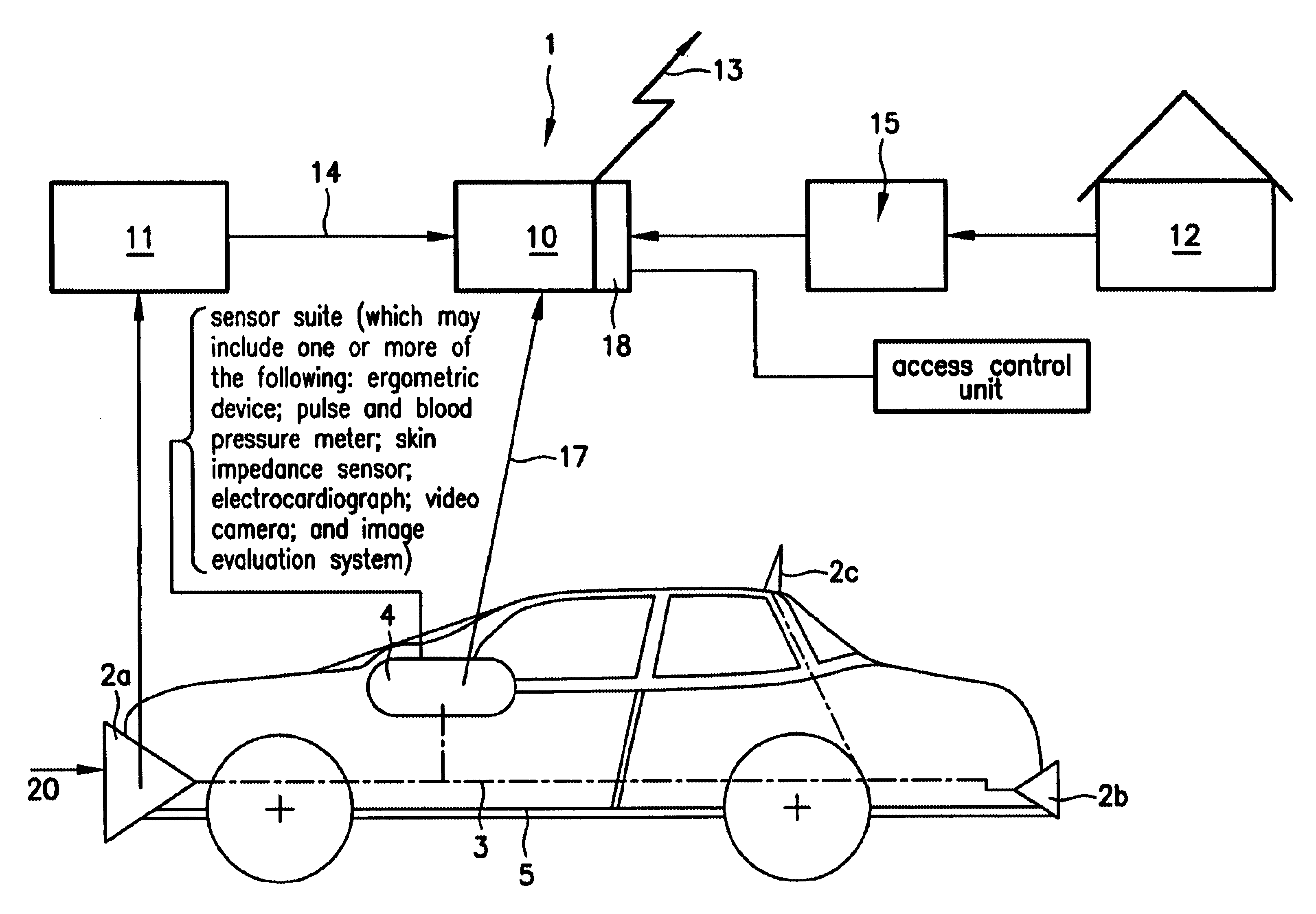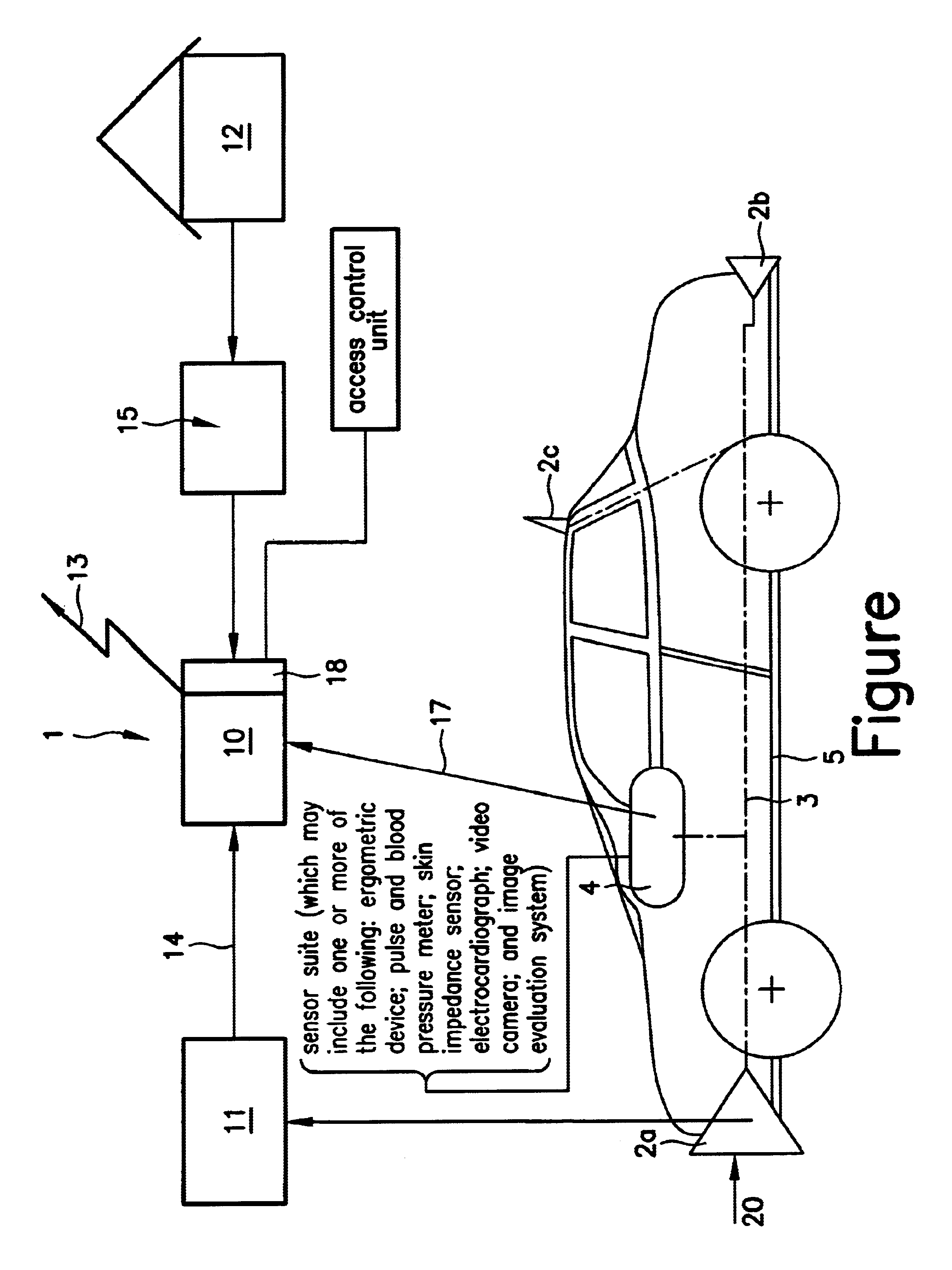Method and device for diagnosing in a motor vehicle a driver's fitness drive
a technology for driving capability and motor vehicles, applied in applications, instruments, tractors, etc., can solve the problems of considerable limitation in the informational capacity of conventional systems or systems under development in terms of assessing the driving capability of drivers in motor vehicles, and achieve the effect of increasing reliability and informativeness
- Summary
- Abstract
- Description
- Claims
- Application Information
AI Technical Summary
Benefits of technology
Problems solved by technology
Method used
Image
Examples
Embodiment Construction
[0020]The description below describes, with reference to the functional block diagram illustrated in FIG. 1, steps of an example driver diagnosis method according to the present invention, as well as functions of an example embodiment of an apparatus configured to perform the method.
[0021]System 1, illustrated in FIG. 1 in the form of functional blocks, includes the following functional units:[0022]an expert system 10 implemented in an onboard computer;[0023]an ACC and navigation system 11 having associated sensors 2a, 2b and a radio antenna 2c; [0024]an arrangement 12 for acquiring the stationary (at-home) physiological data of a driver;[0025]arrangements 15, 18 for storing / transferring to the onboard computer the health-relevant data obtained in stationary fashion;[0026]a vehicle bus system 3 for connecting various units in the vehicle; and[0027]a driver condition sensor suite 4 located in vehicle 5.
[0028]An optionally provided driver access authorization control unit is not illus...
PUM
 Login to View More
Login to View More Abstract
Description
Claims
Application Information
 Login to View More
Login to View More - R&D
- Intellectual Property
- Life Sciences
- Materials
- Tech Scout
- Unparalleled Data Quality
- Higher Quality Content
- 60% Fewer Hallucinations
Browse by: Latest US Patents, China's latest patents, Technical Efficacy Thesaurus, Application Domain, Technology Topic, Popular Technical Reports.
© 2025 PatSnap. All rights reserved.Legal|Privacy policy|Modern Slavery Act Transparency Statement|Sitemap|About US| Contact US: help@patsnap.com


